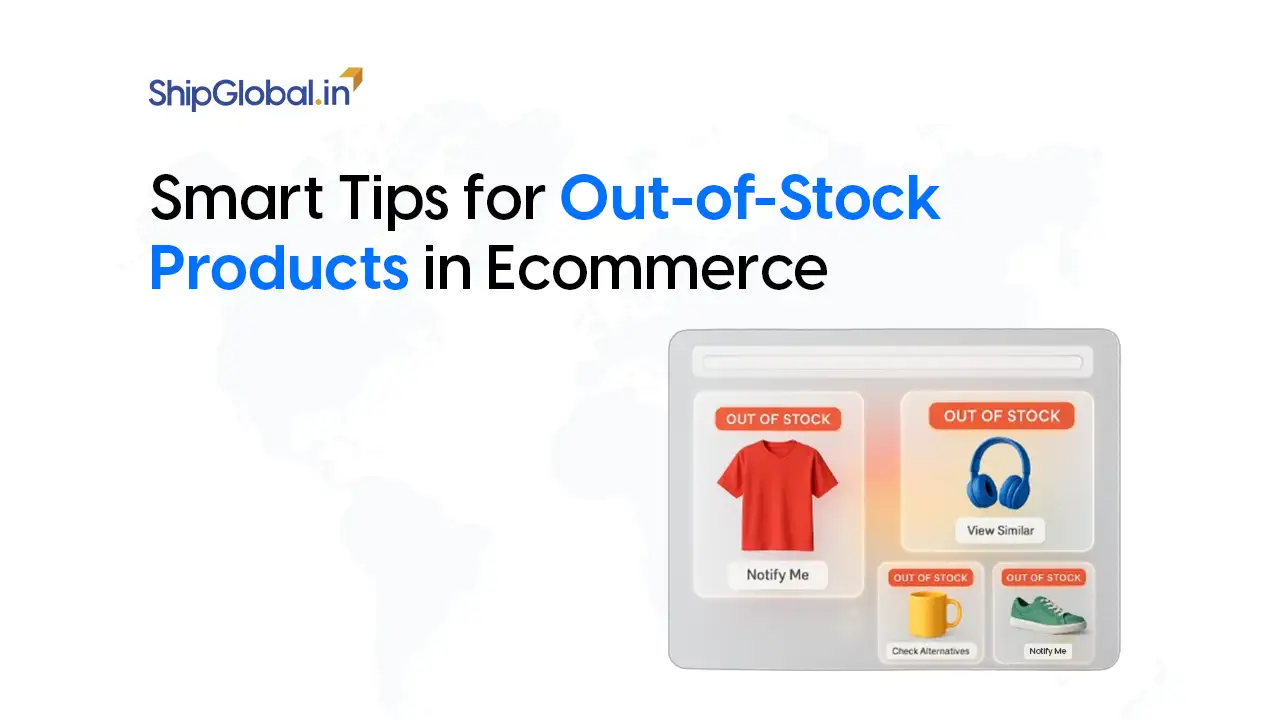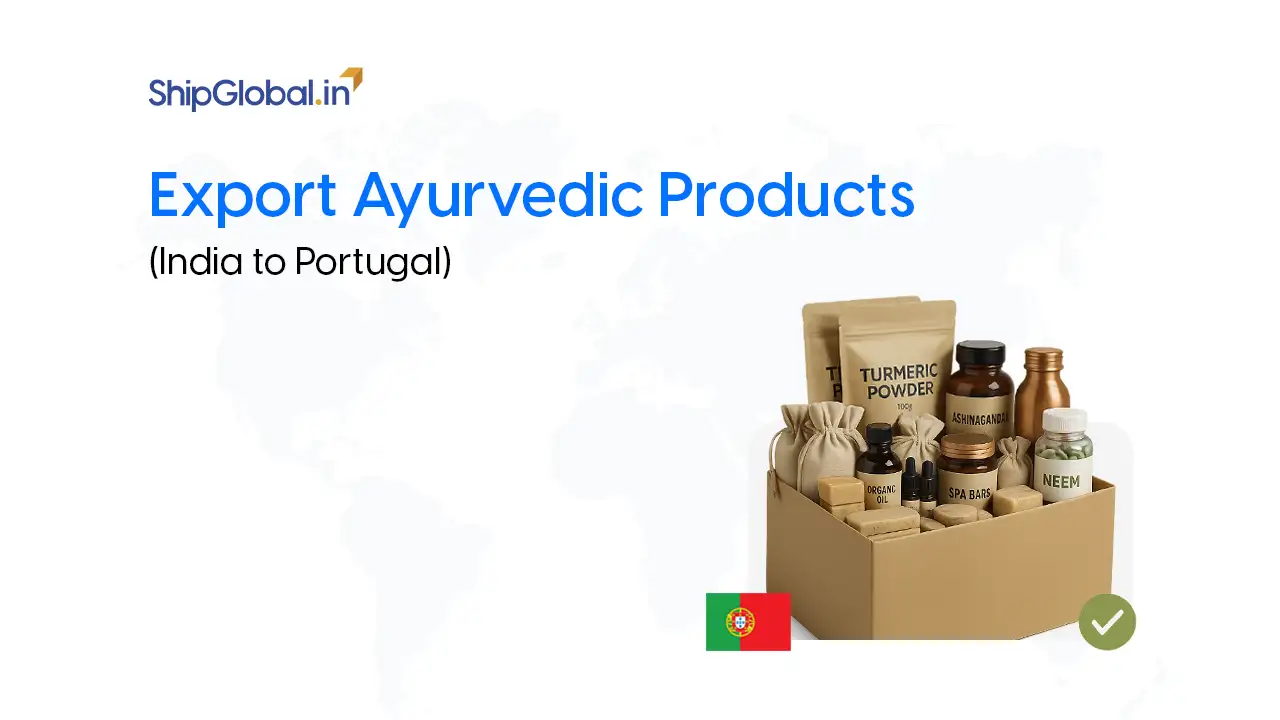India’s cosmetics industry is booming, with an increasing demand for high quality beauty and personal care products across global markets. From herbal skincare to cruelty free makeup, Indian brands are making a mark worldwide. If you’re looking to expand your cosmetic export business internationally, here’s a detailed guide to help you navigate the export process successfully.

Step 1: Market Research and Target Countries
Have you identified your target market yet? If not, start by asking yourself – where are your potential customers located?
Before exporting, it’s crucial to analyse potential markets. Study consumer preferences, demand for Indian cosmetics, regulatory requirements, and competitive brands in your target countries. Identifying the right market ensures better product positioning and smoother entry.
✨ Key Market Research Essentials ✨
-
🎯 Consumer Preferences
Discover what’s trending in beauty—herbal, organic, or cruelty-free? Stay in tune with what drives customer love. -
📈 Market Demand
Gauge the buzz: Do they crave holistic Ayurvedic blends or cutting-edge performance products? -
📜 Regulatory Norms
Understand the legal lane. Import laws—especially in the EU & USA—can be strict and product-specific. -
🤝 Competitive Analysis
Who’s owning the shelf? Track your rivals’ pricing, branding, and marketing magic.
🌟 Master these factors to build a brand that speaks beauty and strategy!
Step 2: Register Your Business and Obtain Export Licenses
To start cosmetic export, you need to register your business and obtain necessary licenses.
- Register with Directorate General of Foreign Trade (DGFT), as it is mandatory for all exporters.
- Obtain an Importer Exporter code (IEC), which is essential for international trade traditions.
- Secure Goods and Services Tax (GST) Registrations, as it is crucial for tax compliance.
- Ensure that your business is legally registered as a Sole Proprietorship, LLP, or Private Limited Company to establish credibility in global markets.

“A business registered as a Private Limited Company enjoys better credibility for international transactions.”
Step 3: Comply with Regulatory Requirements
Did you know? The lack of regulatory compliance is one of the biggest reasons for export rejections.
Different countries have different regulations regarding cosmetics imports. Ensure compliance with:
- Bureau of Indian Standards (BIS) for product safety and quality
- Central Drugs Standard Control Organization (CDSCO) for regulatory approvals.
- Good Manufacturing Practices (GMP) certification for credibility
- Target Country Regulations: Example – The FDA for the USA, EU Cosmetic Regulation for Europe, and GCC guidelines for the Middle East.
Step 4: Manufacture and Package According to International Standards
Quick Question: Does your packaging comply with international labeling requirements?
Manufacturing cosmetics for export involves stringent quality control.
🧴✨ Beauty Export Prep: What to Know!
-
🌿 Ingredient Sourcing
Only the good stuff! Make sure your ingredients follow international safety rules to avoid drama at customs. -
🔬 Product Testing
Say no to sneezes and itches – dermatological testing is your BFF for happy skin (and zero lawsuits). -
🏭 GMP Standards
Credibility looks good on you – ISO 22716 means you’re playing by the global rulebook. -
📦 Packaging Must-Haves
Don’t forget the details! Label everything: ingredients, dates, country, how-to-use, warnings, and all your shiny cert logos (hello, cruelty-free!).
💡 Export-ready isn’t just a label — it’s a full glam routine for your product!

“Attractive and informative packaging increases consumer trust and enhances brand value internationally”
Step 5: Get Product Testing and Certifications
Have you considered what can boost your brand image?
Many international markets require product testing and certification before approval. Ensuring compliance with global safety and quality standards enhances credibility and allows smoother entry into foreign markets. Essential certifications include:
- ISO 22716: This international standard defines guidelines for Good Manufacturing Practices (GMP) specifically for the cosmetics industry. It ensures product quality, safety, and compliance with regulatory norms, helping brands meet global standards build trust with international consumers.
- Organic Certifications: If your products are made from natural ingredients, obtaining certifications like ECOCERT, USDA Organic, or COSMOS can be beneficial. These certifications confirm that the product meets strict organic production criteria, increasing its appeal to environmentally conscious consumers.
- Cruelty-Free Certifications: With rising awareness about ethical beauty, many consumers prefer brands that do not test on animals. Certifications such as PETA’s Beauty without bunnies or Leaping Bunny indicate that a brand is cruelty free, making it more attractive to international buyers.
- Halal Certifications: If you plan to export to Muslim majority countries, obtaining Halal Certification is essential. This certification ensures that your cosmetics comply with Islamic guidelines, making them permissible for Muslim consumers.
Step 6: Choose the Right Shipping and Logistics Partner
Selecting a reliable logistics partner ensures that your cosmetics reach the destination safely. Consider:
- Mode of Transportation: Air freight for fast deliveries, sea freight for bulk shipments.
- Customs Clearance: Work with a freight forwarder or customs broker.
- Warehousing and Distribution: Set up fulfillment centers in key export locations.
Step 7: Pricing, Payment Terms, and Trade Agreements
Ask yourself: Is your pricing strategy competitive in international markets?
💰 Smart Pricing Essentials
-
🏗️ Production Costs
Tally up your ingredients, labor, packaging—everything. Know your base before setting the price. -
🧾 Taxes & Tariffs
Check import duties, VAT/GST, and stay ahead of surprise charges at customs. -
🚚 Shipping Charges
Freight, customs, insurance—bake these into your pricing to avoid cuts to your margins. -
💳 Payment Terms
Play it safe! Use LCs, wire transfers, or PayPal to dodge late or missed payments.
🧮 Price with precision, protect your profit!
Step 8: Promote Your Brand Internationally
Engagement Time: What’s your marketing strategy for global expansion?
A strong marketing approach is crucial. Some effective strategies include:
- Digital Marketing: Use SEO, social media, and influencer collaborations.
- E-commerce Platforms: Sell via Amazon, eBay, and beauty-specific platforms.
- International Trade Shows: Attend beauty expos to build partnerships.
- Distributors and Retailers: Collaborate with local sellers for wider reach.
Final Thoughts
Cosmetic export from India can be highly rewarding if done strategically. By following regulatory norms, maintaining quality standards, and implementing effective marketing, Indian cosmetic brands can successfully thrive in global markets.
The global beauty industry is evolving rapidly, and Indian brands have an edge with their Ayurvedic and herbal formulations. With careful planning, your brand can make a lasting impact internationally.
So, are you ready to take your beauty business worldwide? Start your export journey today!
India’s cosmetics industry is thriving due to increasing demand for high-quality, herbal, and cruelty-free beauty products. By exporting, you can tap into global markets, including the USA, EU, Middle East, and beyond, offering your products a wide audience.
Challenges may include navigating complex regulatory requirements, ensuring product quality meets global standards, dealing with international shipping logistics, and managing competitive pricing in foreign markets.
Indian cosmetics brands can leverage their unique selling points like Ayurvedic ingredients, cruelty-free formulations, and organic certifications. These can help differentiate your products in international markets, especially with consumers looking for natural, ethical beauty options.
The timeline varies based on the target market, product compliance, and logistics. The process of obtaining necessary certifications, regulatory approvals, and finalizing logistics can take several months, so plan accordingly.









